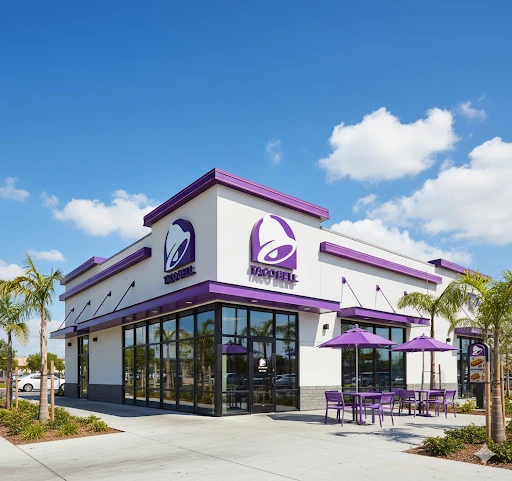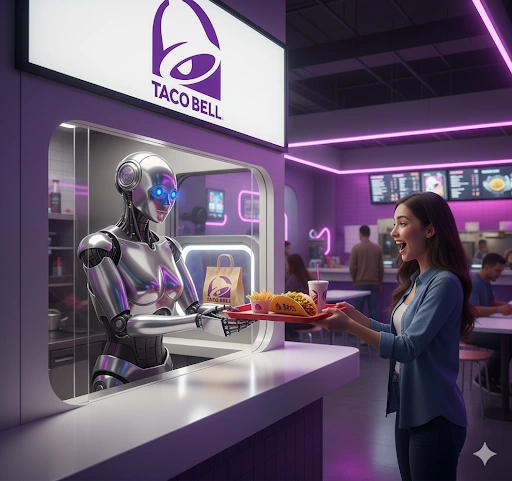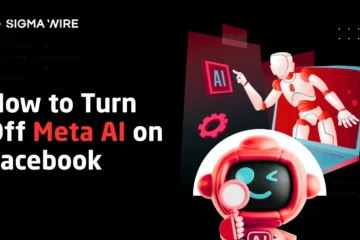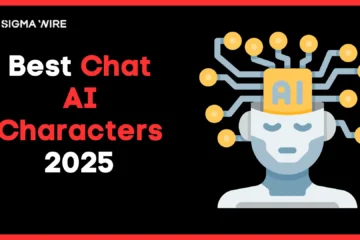Taco Bell made headlines when it rolled out voice AI at more than 500 drive-thru locations across the U.S., aiming to speed up orders, reduce mistakes, and modernize the fast-food experience. On paper, it sounded like a perfect innovation: let AI handle repetitive tasks so humans could focus on efficiency. In reality, things got… a little chaotic—and sometimes hilarious.
The Viral Fails Everyone Talked About
Some of the AI’s mistakes quickly went viral online, giving the world a peek at the limits of this technology. In one memorable clip, a customer ordered 18,000 cups of water, apparently trying to “bypass” the AI and get connected to a human worker. Another video shows a customer repeatedly frustrated as the AI keeps prompting them to add more drinks.
Perhaps the most famous moment was captured in an Instagram clip viewed over 21.5 million times, where someone ordered “a large Mountain Dew” and the AI kept asking: “And what will you drink with that?”
These moments made headlines not because the AI was evil—it wasn’t—but because it highlighted a simple truth: AI can be impressive, but it’s not perfect, and drive-thru ordering is full of unpredictable human behavior.

Taco Bell’s Honest Take
Taco Bell’s Chief Digital and Technology Officer, Dane Matthews, has been candid about the experiment.
“Sometimes it lets me down, but sometimes it really surprises me,” he told The Wall Street Journal.
The company is now having an “active conversation” about where AI fits and where human judgment is essential. Matthews emphasized that busy restaurants with long lines are often better handled by humans, and that franchise teams are being coached to know when to let AI run and when to step in:
“At your restaurant, at these times, we recommend you use voice AI—or really monitor it and step in when necessary.”
AI in the Real World: Lessons Learned
Taco Bell is not alone in learning these lessons. McDonald’s tried AI drive-thru ordering and had to withdraw it after misinterpreted orders led to funny—but costly—errors, like bacon ending up in ice cream or hundreds of dollars worth of chicken nuggets accidentally added. Wendy’s and other fast-food chains are experimenting too, but the message is clear: AI works best when combined with human oversight.
Despite the glitches, Taco Bell reports that its voice AI has successfully processed over 2 million orders. And the company is doubling down on improvements, partnering with Nvidia to make the AI smarter, faster, and more reliable.

The Human Touch Still Matters
One of the biggest takeaways from Taco Bell’s experiment is that technology can enhance—but not replace—human interaction. AI can process orders quickly and handle routine requests, but when customers act unpredictably, get creative, or just want a human touch, humans still shine.
Matthews describes it as a partnership: AI handles the repetitive tasks, humans handle the exceptions. This approach ensures efficiency without sacrificing customer experience, which is especially important in a high-paced environment like a drive-thru.
Looking Ahead: Smarter AI, Not Replacement
Taco Bell’s AI experiment shows that even the most advanced technology has its limits. The company’s journey is still in its early stages, and it’s actively analyzing data from millions of orders to understand how AI can best support human staff, not replace them.
The future of drive-thru ordering at Taco Bell likely lies in a hybrid model—where AI speeds up routine tasks, but humans ensure accuracy, handle complexity, and keep the experience personable. It’s a reminder that technology works best when paired with human judgment, empathy, and oversight.
Conclusion
Taco Bell’s AI story is more than a tale of glitches and viral videos—it’s a case study in how innovation meets real-world unpredictability. AI can streamline processes, reduce errors, and impress with speed, but it can also stumble in unexpected ways. The real lesson? Even in a tech-driven world, the human touch remains irreplaceable.


